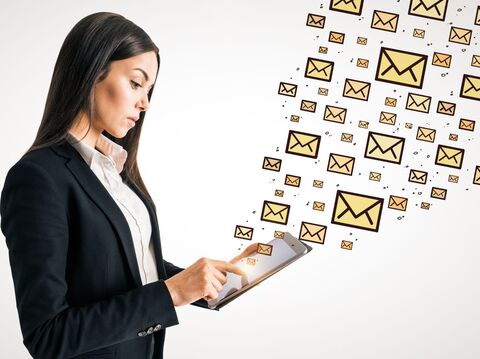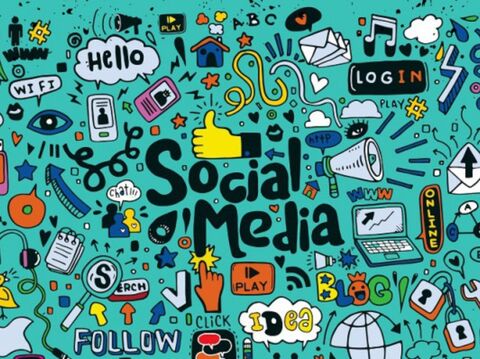How Can Email Automation Improve Customer Retention?

In the competitive business landscape, keeping customers engaged and loyal is hard. Without personalised communication, customers feel overlooked. They get generic emails that do not meet their needs or preferences. This disconnect pushes them towards competitors who offer more tailored experiences.
Email automation changes this situation. It provides highly personalised experiences. Businesses understand what customers like, their buying history, and their behaviour. With this knowledge, you can send customer retention emails. These emails build loyalty and encourage customers to return.
This blog will discuss the power of personalised customer retention emails and strategies to achieve success.
The Power of Personalised Customer Retention Emails
Customer retention emails let you send targeted messages based on customer behaviour and preferences. You can create a more personal connection by tailoring content to each subscriber.
Personalised content goes deeper than just using a customer's name. It involves:
- Tailoring emails based on individual likes and dislikes.
- Suggesting products similar to past purchases.
- Offering content that matches past behaviours.
Targeted content that resonates with a customer’s specific interests can:
- Make customers feel valued and understood.
- Encourage customers to make purchases based on tailored recommendations.
- Help create relevant content that reduces the likelihood of unsubscribes.
Personalisation can include dynamic elements in emails, such as:
- Displaying different products or offers based on the customer’s past interactions.
- Ensuring each customer gets a unique and personalised email experience.
1. Delivering Personalised Content
Personalised retention emails show customers that you understand and value them. They include product recommendations, special offers, and content that matches their interests. According to a study, personalised emails improve click-through rates by 14%[1] and conversion rates by 10%.
-
Product Recommendations
You can send tailored product suggestions based on past purchases in customer retention emails. This makes customers feel understood.
For example, recommend accessories or related products if a customer recently bought a camera. This approach encourages more purchases and strengthens customer relationships.
-
Special Offers
Offer exclusive discounts to loyal customers as it shows appreciation. For instance, send a birthday discount or a special offer for their loyalty. These gestures boost engagement with your brand and can significantly enhance customer retention.
-
Interest-Based Content
Share content that matches customers' interests to keep them engaged. Send related articles or updates if a customer shows interest in a specific product category. This will keep their interest alive and encourage repeat visits to your website.
2. Nurturing Leads to Build Loyalty
Automated retention emails help nurture leads by providing relevant information at each stage of the buying journey.
-
Welcome Series
A welcome series introduces new subscribers to your brand. These emails can share your brand story, showcase popular products, and offer discounts to encourage a first purchase.
Welcome emails have an average open rate of 50% making them a powerful tool[2] for initial engagement.
-
Brand Introduction
The first email in the welcome series should introduce your brand. Share your story, values, and what makes you unique. This helps new subscribers connect with your brand on a personal level.
-
Product Showcase
Highlight your best-selling or popular products in the second email. Include high-quality images and compelling descriptions to attract the customer's interest. This can drive initial sales and further engagement.
-
Special Discount
In the final email of the series, offer a special discount to encourage the first purchase. This could be a percentage off their first order or a limited-time offer. Providing a clear call to action (CTA) can help convert new subscribers into customers.
-
Loyalty Programs
Loyalty programs reward customers for their repeat business. This marketing automation can inform customers about their points balance, remind them of rewards, and encourage more purchases. Studies show that loyalty program members spend 12–18% more per year[3] than non-members.
-
Points Balance Updates
Regular updates about their points balance keep customers engaged with the loyalty program. It motivates them to make more purchases. They want to earn more points or reach the next reward level.
-
Reward Reminders
Remind customers about their available rewards. This encourages them to redeem these rewards. Highlight the benefits, like exclusive products or discounts, to make them take action.
-
Exclusive Offers
Offer exclusive deals or early access to sales for loyalty program members. This will make them feel valued and appreciated and increase their likelihood of staying loyal to your brand.
3. Maintaining Engagement Through Consistent Communication
Keeping customers engaged is crucial for retention. This marketing automation ensures regular communication without overwhelming your team.
Let us take a look into customer retention email strategies:
-
Re-Engagement Campaigns
Re-engagement email campaigns target inactive customers to bring them back. These emails can include special offers, reminders of what they are missing, or a simple “we miss you” message.
Re-engagement emails can encourage up to 45%[4] of inactive customers.
-
Special Offers
Provide a compelling offer to entice inactive customers back. This could be a discount, a gift with a purchase, or a limited-time promotion. The goal is to make the offer irresistible and encourage customers to re-engage with your brand.
-
Content Reminders
Remind customers of the valuable content they might be missing out on. This could be blog posts, guides, or exclusive updates. Highlighting the benefits of staying engaged with your brand can prompt inactive customers to reconnect.
-
Personalised Messages
Send personalised messages that address the customer's inactivity. A simple "we miss you" email acknowledging their absence and inviting them back can significantly impact them. Personalisation shows that you care about their presence.
-
Feedback Collection
Asking for feedback tells customers you value their opinions. Automated emails can ask for reviews, run satisfaction surveys, and check back on past issues. This not only gives you essential insights but also strengthens customer relationships.
-
Post-Purchase Reviews
Send an email asking for a review after a customer buys something. This feedback helps you improve your offer and shows other customers that people trust your products.
-
Satisfaction Surveys
Run satisfaction surveys regularly to find out how customers feel. Ask them about their experience with your products and services. Use their feedback to make changes. This shows customers you care about what they think.
-
Follow-Up Interactions
Check back on past interactions to ensure customer satisfaction. If a customer contacts support, email them to confirm their problem is solved. This active approach helps build trust and loyalty.
Metrics to Measure the Success of Emails for Customer Retention
Customer retention strategies also must be measured for success. Tracking the performance of your email campaigns is essential to understand their impact on customer retention. Here are the popular success key metrics:
-
Open Rates and Click-Through Rates
High open rates and click-through rates indicate that your emails are engaging and relevant. These metrics help gauge the effectiveness of your subject lines, content, and call-to-actions.
-
Open Rates
A high open rate means your subject lines are compelling and your audience is interested.
-
Click-Through Rates
Click-through rates measure the number of recipients who click on a link in your email. A high click-through rate shows that your content is engaging and driving action.
-
Conversion Rates
Conversion rates measure customer retention strategies. This is done by measuring how many recipients take the desired action, such as making a purchase or signing up for a loyalty program. Higher conversion rates show that your emails are successfully driving customer actions.
-
Purchase Conversions
Track how many email recipients make a purchase. A higher purchase conversion rate indicates that your emails are effectively driving sales.
-
Signup Conversions
Measure how many recipients sign up for your loyalty program or newsletter. This metric helps assess the effectiveness of your email campaigns in driving customer engagement and retention.
Wrapping Up
Email automation boosts customer retention. It sends personalised content, nurtures leads, and keeps people engaged. You can build strong customer relationships by using welcome emails, loyalty programs, re-engagement efforts, and gathering feedback.
Keep a close eye on your strategies and measure your results regularly. This ensures your retention emails keep customers interested and build long-term loyalty. It also promotes ongoing brand growth.
Transform your business strategy today. Partner with GrowthJockey for innovative solutions and expert guidance. Let's elevate your growth to the next level. Get started now!
FAQs
1. How can email automation target marketing messages to different customer segments?
Email marketing sorts customers into different groups. This is based on their buying history, behaviour, and other traits. It then sends tailored messages to each group. This makes content more relevant and appealing. This approach helps improve customer experience and encourages them to buy again.
2. How do behavioural triggers help in email automation to keep customers?
Behavioural triggers are customer actions like looking at products or not completing a purchase. Email automation responds to these actions with timely, personalised messages.
For example, if someone leaves items in their cart, an automated email can remind them to complete the purchase. This boosts the chances of making a sale.
3. How does email automation manage regular communication with customers without overwhelming them?
Email automation schedules messages based on when and how customers interact with your business. This keeps communication regular without being too much. It ensures messages are timely and suitable. This lowers the chance of customers feeling overwhelmed.
Regular, thoughtful contact helps build stronger relationships, increasing customer loyalty and retention.








